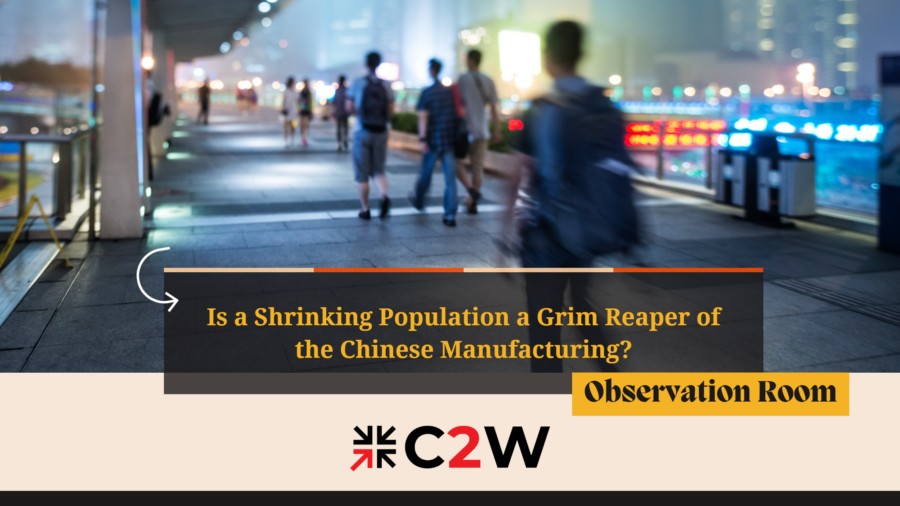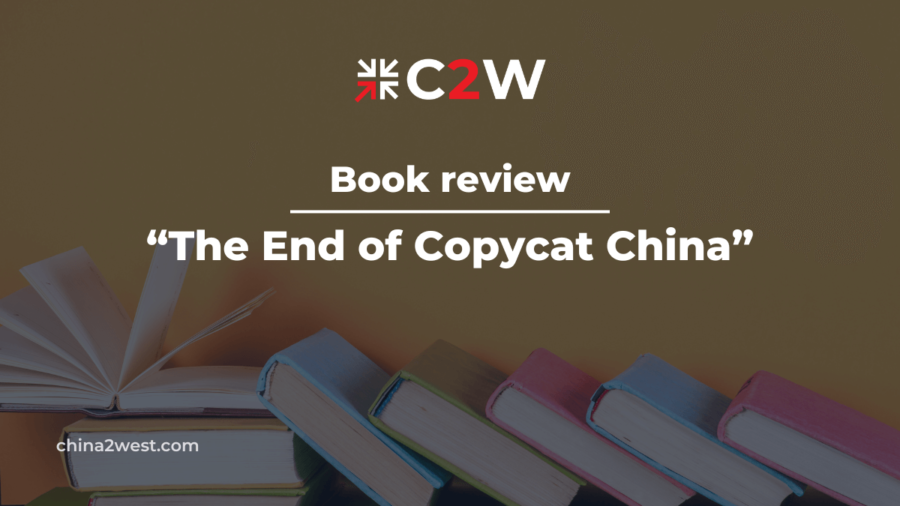By mid-2023, India will surpass China as the world’s most populous country, ending China’s reign since the UN began keeping population records in 1950.
Although it is a great milestone for India, China’s unavoidably diminishing population will also have profound consequences for the global economy, particularly in the realm of global supply chain and Chinese manufacturing.
This is definitely not good news for China, on top of the seemingly unpreventable downturn in US-China relations, and China’s efforts to boost its manufacturing sector. The US Treasury Secretary Janet Yellen proposed a plan for continued economic cooperation with China, despite acknowledging the acute security risks.
Many tech giants are transferring some of their product capacities out of China for supply chain security, due to geopolitics and the rising costs of making their products in the “World’s Factory”. But if the appeal of low-cost labor is already dwindling, what options do foreign businesses have to maintain their production lines in China?
It impacts on not only the Chinese manufacturing, but global.
China’s shrinking population could spell trouble for both domestic and international businesses.
With fewer workers available to fill low-skilled jobs, labor costs are expected to rise, leading to a decrease in productivity and efficiency as the workforce ages.
This demographic shift poses a significant challenge for businesses operating in China, particularly those in the manufacturing industry, as they struggle to keep up with rising costs.
The impact of China’s shrinking population is not limited to domestic businesses alone. As the world’s largest exporter of manufactured goods, any disruption in China’s manufacturing industry is sure to have a ripple effect on the global economy.
With rising labor costs and a decrease in productivity, there is a possibility that manufacturing could shift to other countries with younger workforces and lower labor costs, such as Southeast Asia, India and Mexico.
However, such a shift would also result in supply chain disruptions for many companies that have become reliant on China’s manufacturing capabilities. This would lead to increased costs for businesses as they try to navigate the transition to new manufacturing hubs and supply chains.
As a result, the shift away from China’s manufacturing industry could be a double-edged sword for businesses, with both opportunities and challenges.
On the positive side, the decrease in domestic demand in China could lead to a renewed focus on export-oriented production, which could benefit businesses operating in other countries with export-oriented economies.
This presents an opportunity for businesses to tap into new markets and diversify their supply chains, potentially reducing their reliance on China.
As businesses navigate these changes, adaptability and flexibility will be key to their survival and success.
Is China Plus One a must-take path?
As businesses operating in China face the challenge of a shrinking population and rising labor costs, many are looking for alternative strategies to maintain their competitiveness in the global market.
One such strategy is the “China Plus One” approach, which involves diversifying manufacturing operations beyond China to mitigate risks and uncertainties.
The notion of China Plus One as a potential solution has been gaining traction among businesses in recent years, as businesses seek to reduce their dependence on China’s manufacturing capabilities and mitigate risks associated with geopolitical tensions, trade disputes, and supply chain disruptions.
By diversifying their operations to other countries, businesses can tap into new markets, reduce costs, and gain access to a younger and more dynamic workforce.
However, the China Plus One strategy is not without its challenges.
Businesses must carefully consider factors such as infrastructure, logistics, regulations, and workforce availability when selecting new manufacturing hubs.
Moreover, the transition to new manufacturing locations can be costly and time-consuming, requiring significant investments in new facilities, equipment, and personnel.
That’s why the decision to shift production away from China is not one that can be made lightly, and companies must carefully consider the potential risks and benefits before making such a move.
One of the main reasons why China remains the main hub for many businesses is its longstanding expertise in manufacturing.
The country has developed an extensive network of suppliers and subcontractors that offer everything from raw materials to finished products, making it easy for businesses to set up manufacturing lines and start producing.
Moreover, China’s manufacturing capabilities are not easily replicated in other countries. While countries like Vietnam, India, and Mexico have emerged as potential alternatives, they lack the same level of infrastructure and expertise that China has built up over decades.
This means that businesses that do decide to shift production away from China may face significant challenges in finding suitable alternatives.
China’s continued dominance in manufacturing is not solely due to its cost-effective labor, with its heavy investment in technology and innovation, making it a leader in industries like robotics, artificial intelligence, and renewable energy.
This has allowed China to offer more than just low-cost production, providing added value to businesses looking to expand their operations.
In the end, while China Plus One may be a viable option for some businesses, it is not a one-size-fits-all solution.
Companies must carefully weigh the potential benefits and risks of shifting production away from China and consider the challenges they may face in finding suitable alternatives.
Policy may not be the fix, but technology can be
In the face of China’s shrinking population, the government has tried to launch policies aimed at increasing birth rates.
However, these efforts have failed to stop the trend.
Even with incentives like cash handouts and a loosening of the one-child policy to allow for three children, most people, especially educated Chinese women, are still choosing to delay marriage and forego having children due to high costs of housing and education.
This has left the country with a dwindling workforce that is threatening the manufacturing industry and its economy at large.
The government’s reluctance to loosen immigration rules and issue more green cards to replenish the workforce has further compounded the issue.
Without a significant increase in the population, there will be fewer workers to fill the low-skilled jobs that are crucial to the manufacturing industry.
To tackle the labor shortage, China is also turning towards technology to help address the shortage.
The Middle Kingdom is investing heavily in automation and robotics to fill the void left by the shrinking workforce, aiming to rely more on artificial intelligence and technology for future growth.
In fact, it is not a surprising move, given its recent advancements in these fields.
In recent years, China has invested heavily in research and development in artificial intelligence (AI) and robotics, surpassing most other major economies in terms of progress.
This investment has allowed China to make significant strides in automation and AI-powered manufacturing, leading to greater efficiency and productivity in its factories.
By incorporating these technologies into their operations, Chinese manufacturers are able to reduce their reliance on human labor and overcome the challenges posed by a shrinking workforce.
This has made it possible for China to continue to maintain its position as the world’s leading exporter of manufactured goods, even in the face of a dwindling workforce.
Furthermore, China’s dominance in the AI and robotics industries is not limited to manufacturing. The country has also made significant strides in areas such as autonomous vehicles, smart cities, and digital payment systems, among others.
These developments have contributed to China’s position as a leader in the global tech industry, with the potential to shape the future of technology and its applications.
While China’s investments in technology and automation have been key to addressing the challenges posed by a shrinking workforce, there are still concerns about the long-term impact of these developments.
Some experts worry that increased automation could lead to job losses and economic inequality, particularly for low-skilled workers.
Additionally, there are concerns about the ethical implications of AI and the potential for misuse or abuse of these technologies,
Despite these concerns, China’s continued investment in technology and automation is likely to shape the future of manufacturing and the global economy.
As the country continues to develop its capabilities in these areas, it will be interesting to see how this impacts the competitiveness of other economies and the shape of global supply chains.
In the midst of our ever-changing world, one thing is certain: uncertainty.
Although policymakers have implemented measures to combat the problem of declining populations, technology may hold the key to alleviating the consequences of demographic changes on the manufacturing industry.
Maybe that’s how we respond to the chaos of the world brought by these various uncertainties, a continuous state of innovation.
In the face of these transformations, adaptability and flexibility will be crucial to firms’ survival and prosperity.
In this regard, C2W, a manufacturing solutions provider, can prove a dependable ally for businesses seeking to outsource their production lines to Asia by leveraging their own international product development team, self-owned assembly facility and 18 years of industry experience. Contact us today!


